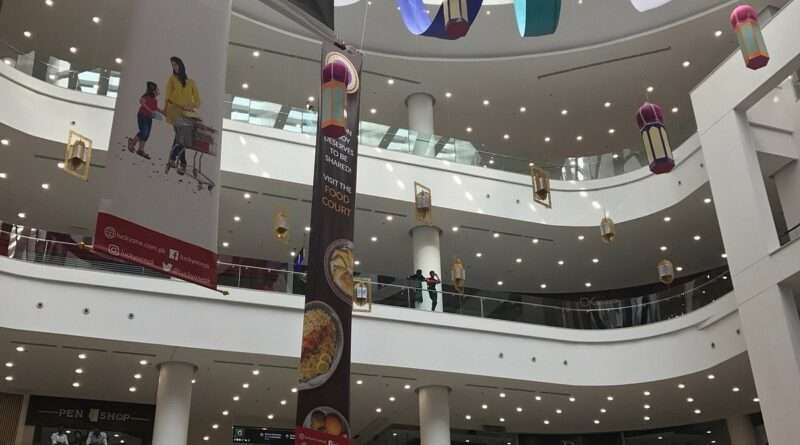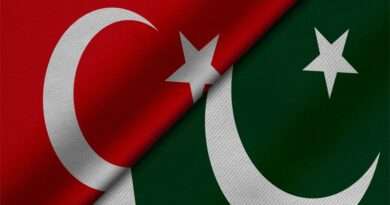Mega malls: High luxury, low sales
|
Getting your Trinity Audio player ready...
|
Over the past decade, Pakistan’s retail landscape has undergone a significant transformation. Traditional bazaars and open markets have gradually given way to sprawling mega malls in urban centers. Cities like Karachi, Lahore, and Islamabad now boast state-of-the-art shopping complexes that cater to a variety of consumer needs. However, while these malls have become hubs of social and recreational activities, there is an ongoing debate about their effectiveness in driving substantial retail sales.
The Emergence of Mega Malls in Pakistan
The rise of mega malls in Pakistan can be attributed to several factors, including urbanization, a growing middle class, and changing consumer preferences. Developers have invested heavily in constructing these multi-story complexes, aiming to offer a blend of shopping, dining, and entertainment under one roof. Malls such as Emporium Mall in Lahore, Dolmen Mall in Karachi, and Giga Mall in Islamabad have set new benchmarks in retail infrastructure.
Emporium Mall, for instance, inaugurated in 2016, spans approximately 1.8 million square feet and houses over 200 stores, a vast food court, a nine-screen cinema, and a dedicated children’s play area. Its design and amenities have made it a focal point for both shopping and leisure activities in Lahore.
Entertainment Over Shopping: The Visitor Dilemma
Despite the impressive infrastructure and diverse offerings, many retailers within these mega malls have observed a discrepancy between foot traffic and actual sales. A significant portion of visitors frequent malls primarily for entertainment purposes rather than shopping. The air-conditioned environments, diverse dining options, and entertainment facilities like cinemas and play areas make malls attractive destinations, especially during extreme weather conditions.
Naeem Khan, owner of a major footwear brand, noted, “We see a lot of families and young people spending time here, clicking pictures, and window shopping. Sales happen, but they are not as high as in standalone flagship stores or high-street markets.”
Retailers’ Perspective: Brand Presence vs. Sales Performance
For many retailers, having a presence in these mega malls is more about brand positioning than immediate sales returns. Being located in a prominent mall enhances brand visibility and credibility, even if it doesn’t translate directly into higher sales.
Jamil Ahmed, a senior executive at a leading fashion retail chain, emphasized, “The big retailers have no choice but to secure a place in every shopping mall—not because it will boost sales but to show people that we are growing and available at multiple locations.”
Consumer Insights: Preferences and Purchasing Behavior
From the consumer’s perspective, malls offer a convenient and comfortable shopping environment. However, pricing remains a concern. Many shoppers perceive mall prices to be higher compared to traditional markets. As a result, some consumers prefer to browse products in malls and then purchase them online or from local shops where prices may be more competitive.
Nadia Malik, a frequent mall visitor, shared, “The experience is great. You get all brands under one roof, there’s security, and you can eat and shop at the same place. But the prices are usually higher than what you find in the open market.”
Global Comparisons: Malls as Comprehensive Destinations
Internationally, mega malls have evolved into comprehensive destinations that offer more than just shopping. For example, The Dubai Mall features attractions like an aquarium, an ice rink, and a fountain show, making it a major tourist destination. While Pakistani malls are still developing in this regard, there is potential for them to incorporate more immersive experiences to enhance visitor engagement.
Challenges and Opportunities in the Pakistani Context
One of the challenges Pakistani malls face is the country’s limited appeal as a tourist destination, which affects the potential for attracting international visitors. However, the growing urban population and a rising middle class present opportunities for these malls to become central hubs for community engagement and commerce.
Real estate economist Waseem Tariq Malik observed, “A lot has changed since the mega mall culture entered Pakistan. It has also transformed shopping habits for many Pakistanis. I believe this trend will slowly but steadily change people’s habits, and it remains a profitable investment for developers, considering ever-growing rental prices.”
The Future of Mega Malls in Pakistan
As the retail landscape in Pakistan continues to evolve, mega malls are likely to play a pivotal role. Developers are now expanding their focus beyond major cities to second-tier cities like Faisalabad, Multan, and Peshawar, recognizing the untapped potential in these regions.
The success of these ventures will depend on their ability to adapt to local consumer preferences, offer value-driven experiences, and integrate entertainment with retail in a way that encourages higher spending.
Conclusion
Mega malls have undeniably reshaped the urban shopping experience in Pakistan. While they serve as modern centers for socialization and entertainment, the challenge remains to convert high foot traffic into substantial retail sales. By understanding consumer behavior and continuously innovating, these malls can enhance their appeal and profitability in the years to come.
FAQs
- Why have mega malls become popular in Pakistan?
- Mega malls have gained popularity due to urbanization, a growing middle class, and changing consumer preferences that favor organized retail experiences.
- Do visitors primarily shop when they visit these malls?
- Many visitors frequent mega malls for entertainment, dining, and leisure activities, with shopping being just one of the several attractions.
- How do retailers benefit from having outlets in mega malls?
- Beyond direct sales, retailers benefit from enhanced brand visibility, credibility, and the opportunity to reach a diverse customer base.
- Are prices in mall stores higher than in traditional markets?
- Some consumers perceive mall prices to be higher due to factors like fixed pricing policies and premium brand offerings.
- What is the future outlook for mega malls in Pakistan?
- The future looks promising, with developers expanding into second-tier cities and focusing on integrating more immersive experiences to attract and retain customers




